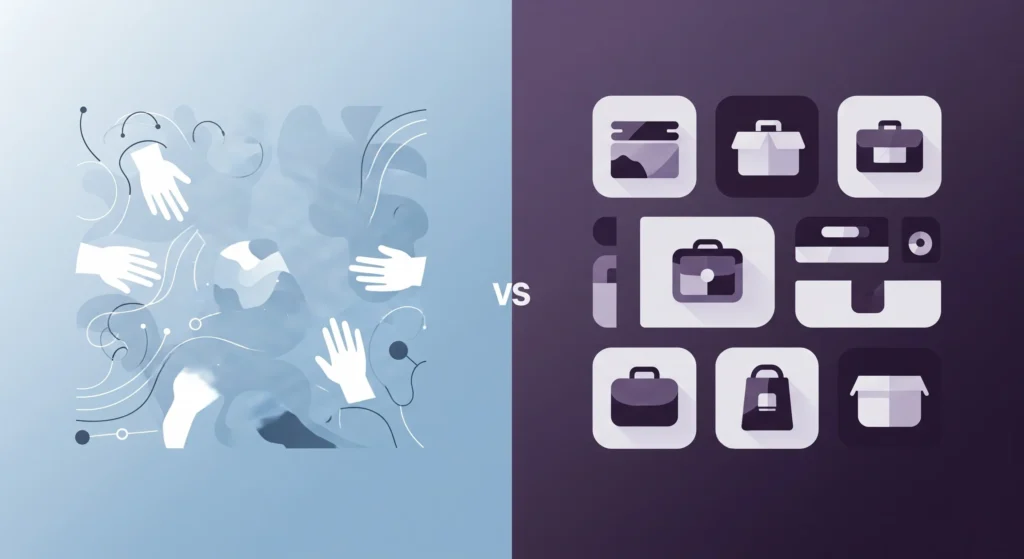Service-Based vs. Product-Based Websites: Why the Difference Matters for User Experience
July 17, 2025 | By Alex White

Think about your website. Is it truly built to attract, engage, and convert clients for your service business? Many business owners mistakenly assume that all websites are fundamentally the same, or that e-commerce best practices apply universally. But when it comes to user experience (UX), there’s a crucial distinction between a service-based website and a product-based website, and understanding it is key to your online success.
If you’re a service provider, your website isn’t just an online brochure; it’s your virtual storefront, your lead generation machine, and a powerful tool for building trust. Ignoring the unique UX for service businesses can mean lost opportunities and confused visitors.
What Are Service-Based and Product-Based Websites?
At its core, the difference lies in what you’re offering and how users engage with it.
Service-Based Website: Designed to promote and facilitate the offering of intangible expertise, time, and results such as consulting, coaching, web design, or plumbing services. The “product” is a tailored solution, not something you place in a cart.
Product-Based Website: Often an e-commerce site built to sell tangible goods or standardized digital products like clothing, electronics, books, or software licenses. These platforms revolve around browsing catalogs and purchasing through a cart system.
Key takeaway: These two models serve different user intents, and therefore, must be designed accordingly. Using an e-commerce layout for a service business is like fitting a square peg in a round hole it won’t optimize your UX.
Core Differences in User Experience (UX) Design
Both websites aim to convert users, but their UX design priorities differ drastically.
Product-Based UX Focuses On:
- Visual Presentation: High-quality product images and videos.
- Streamlined Purchase Paths: Fast add-to-cart and checkout process.
- Product Information: Clear specs, features, and reviews.
Service-Based UX Focuses On:
- Trust and Authority: Build credibility in the absence of a physical product.
- Clear Value Proposition: Explain how your service solves specific problems.
- Relationship Building: Foster interactions through consultations and inquiries.
- Proof of Results: Showcase client outcomes and success stories.
The decision-making process is different. Service buyers aren’t browsing for a deal they’re searching for someone they can trust to solve a problem.
UX Strategy for Service-Based Websites
What makes a service business website truly effective? It should guide visitors toward becoming leads through trust, clarity, and interaction—not through direct purchase funnels.
-
Emphasize Your Expertise and Credibility
- About Page: Share your story, approach, and qualifications.
- Team Bios: Highlight the real people and their expertise.
- Thought Leadership: Offer educational content like blogs or guides.
-
Showcase Your Success (Social Proof)
- Testimonials: Feature real client feedback with photos if possible.
- Case Studies: Explain client challenges, your solution, and the outcome.
- Client Logos or Portfolios: Visually display project results or clients served.
-
Clarify Your Services and Process
- Problem-Solution Framing: Explain what issues your services solve.
- Transparent Process: Outline how you work with clients step-by-step.
- Service Pages: Each offering should have a detailed, benefit-driven page.
-
Facilitate Easy Communication and Conversion
- Clear CTAs: Use phrases like “Book a Consultation” or “Request a Quote.”
- Live Chat & Forms: Make contacting you effortless.
- Accessible Contact Info: Display phone and email prominently.
- Strategic Navigation: Guide users from problem awareness to contacting you.
Why the Difference Matters (Business Impact)
Getting this UX distinction right leads to significant advantages:
- Higher-Quality Leads: Attract more qualified prospects.
- Increased Conversions: Guide users to take action with confidence.
- Stronger Authority: Position your business as trustworthy and professional.
- Fewer Sales Frictions: Answer questions up front to shorten the sales cycle.
Ignoring these UX principles? You risk confusing visitors, losing leads, or making your services appear commoditized or unclear.
Conclusion
Your website is a strategic asset especially for a service-based business. Recognizing the fundamental differences between service-based and product-based websites lets you design a better experience for your audience.
Focus on building trust, clearly communicating your expertise, simplifying interaction, and guiding users on a journey from confusion to clarity, and from visitor to client.
Ready to ensure your website truly serves your service business and provides an unparalleled user experience for your clients?
Source: https://weboracreative.com/service-based-vs-product-based-websites-why-the-difference-matters-for-user-experience/


